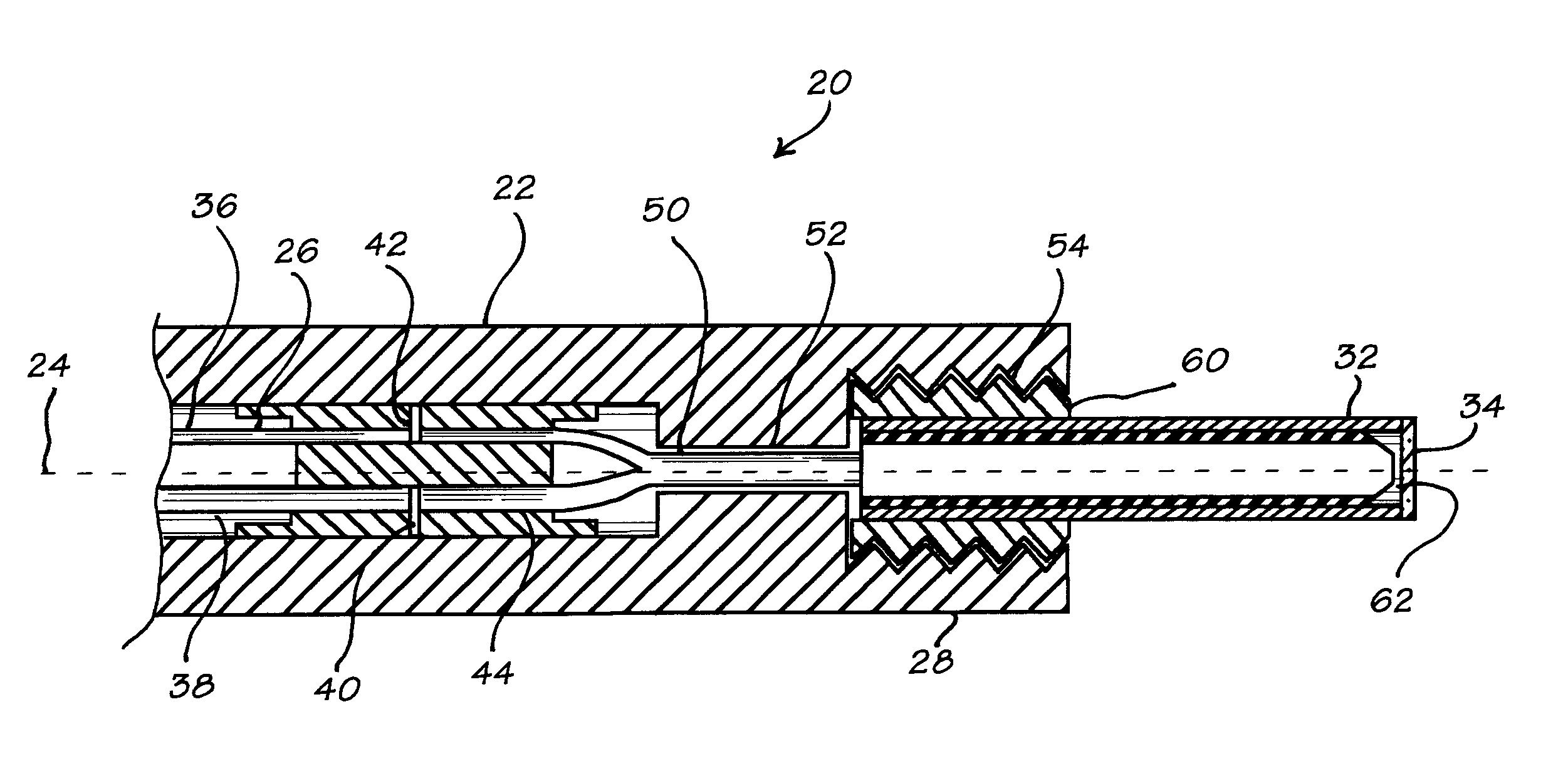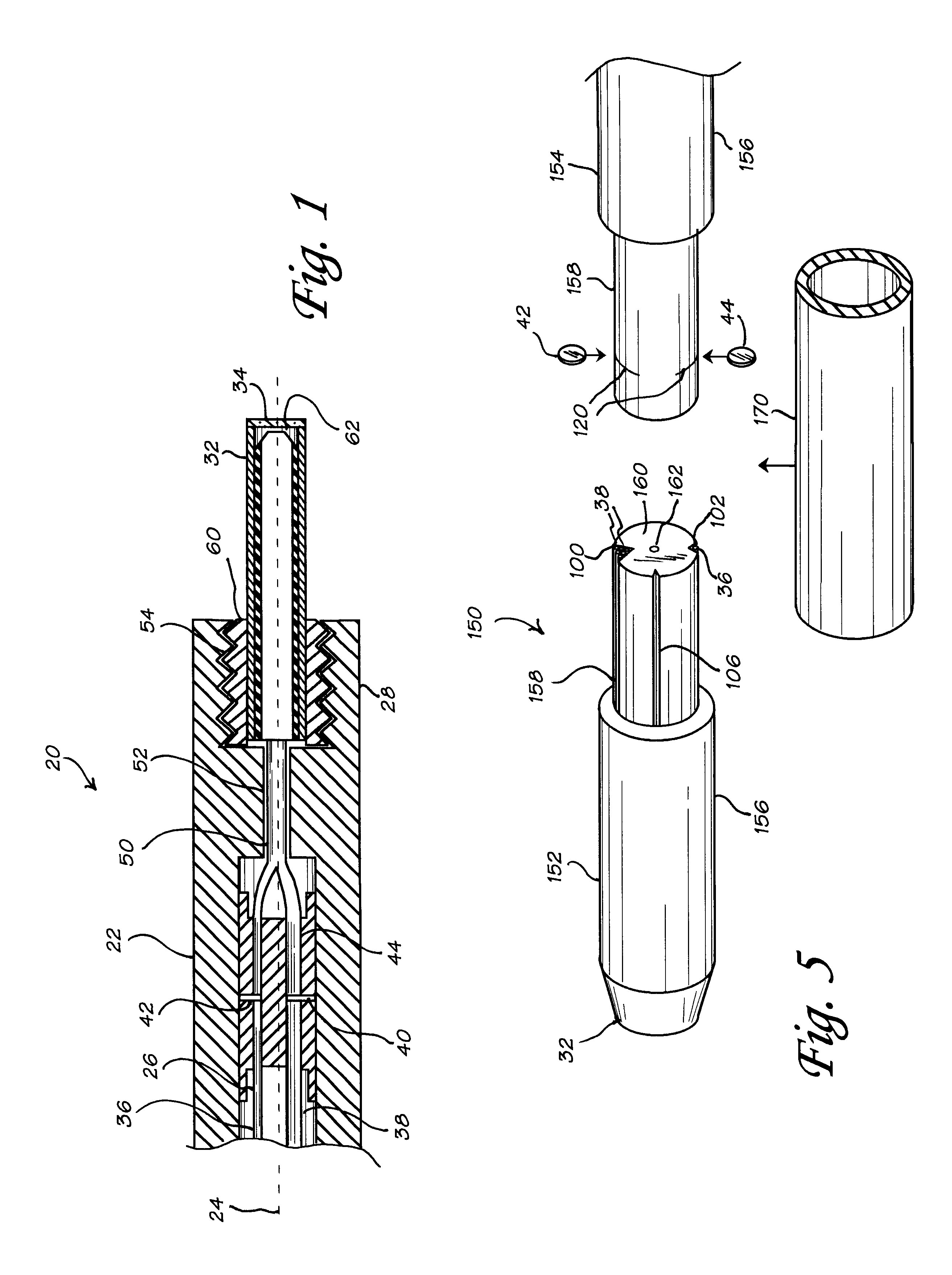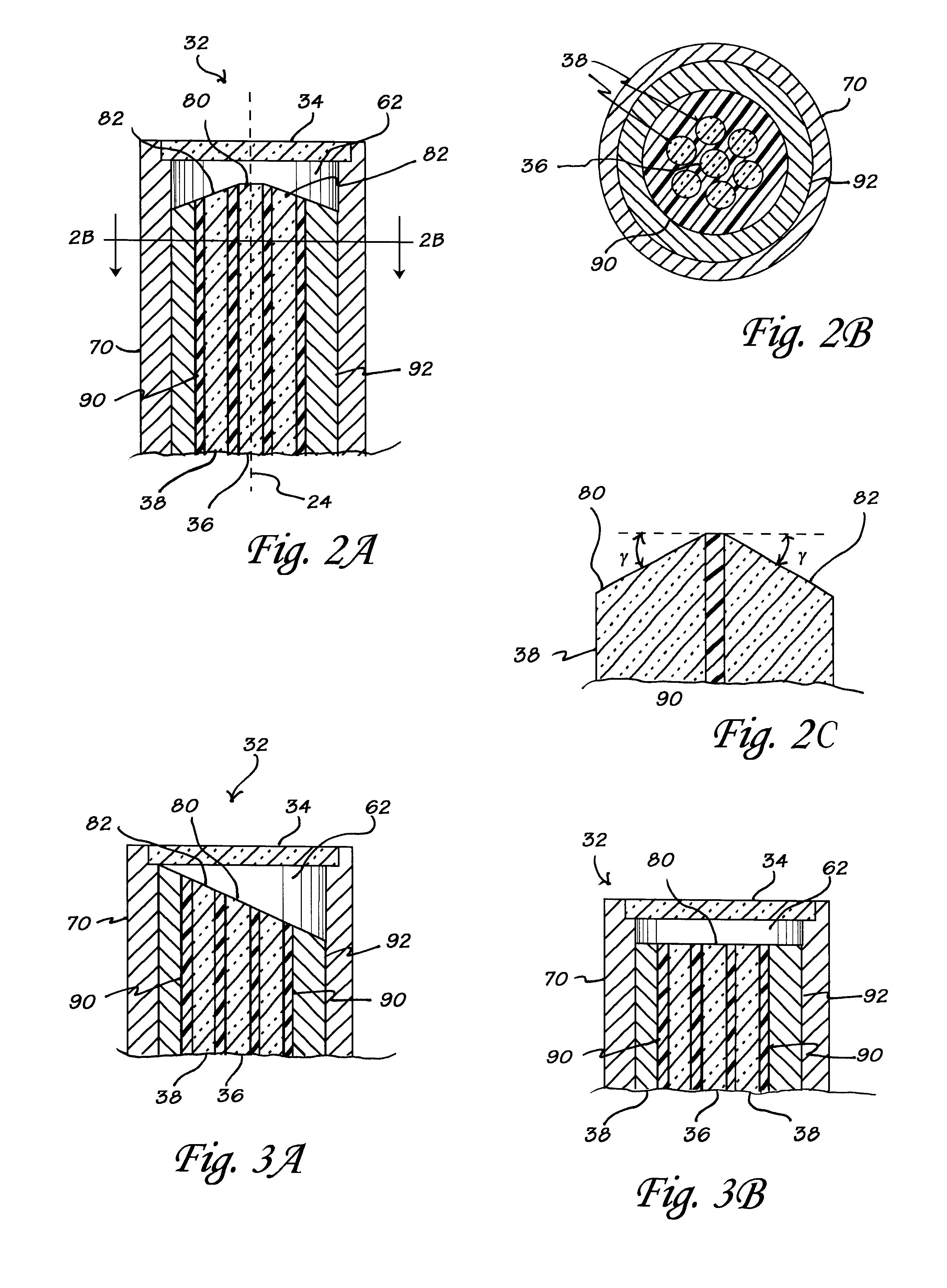Fiber optic probe and coupler assembly
a fiber optic probe and coupler technology, applied in the direction of optical elements, instruments, investigating moving fluids/granular solids, etc., can solve the problems of small scattering cross section, perturbing the source, and data obtained from a sample not always truly representativ
- Summary
- Abstract
- Description
- Claims
- Application Information
AI Technical Summary
Benefits of technology
Problems solved by technology
Method used
Image
Examples
Embodiment Construction
In the following description, reference numerals are used to identify structural elements, portions of elements, or surfaces in the drawings, as such elements, portions or surfaces may be further described or explained by the entire written specification. For consistency, whenever the same numeral is used in different drawings, it indicates the same element, portion, surface and area as when first used. As used herein, the terms "horizontal," "vertical," "left," right," "up," "down," as well as adjectival and adverbial derivatives thereof, refer to the relative orientation of the illustrated structure as the particular drawing figure faces the reader.
Referring now to FIG. 1, there is shown a cross-sectional view of a fiber optic probe 20 according to a preferred embodiment of the present invention. Probe 20 includes a probe body 22 with a longitudinal axis 24, an interior 26, a proximal end 28, and a probe tip 32 with a window 34. At least one light-transmitting fiber 36, at least o...
PUM
| Property | Measurement | Unit |
|---|---|---|
| core diameters | aaaaa | aaaaa |
| bevel angle | aaaaa | aaaaa |
| temperatures | aaaaa | aaaaa |
Abstract
Description
Claims
Application Information
 Login to View More
Login to View More - R&D
- Intellectual Property
- Life Sciences
- Materials
- Tech Scout
- Unparalleled Data Quality
- Higher Quality Content
- 60% Fewer Hallucinations
Browse by: Latest US Patents, China's latest patents, Technical Efficacy Thesaurus, Application Domain, Technology Topic, Popular Technical Reports.
© 2025 PatSnap. All rights reserved.Legal|Privacy policy|Modern Slavery Act Transparency Statement|Sitemap|About US| Contact US: help@patsnap.com



